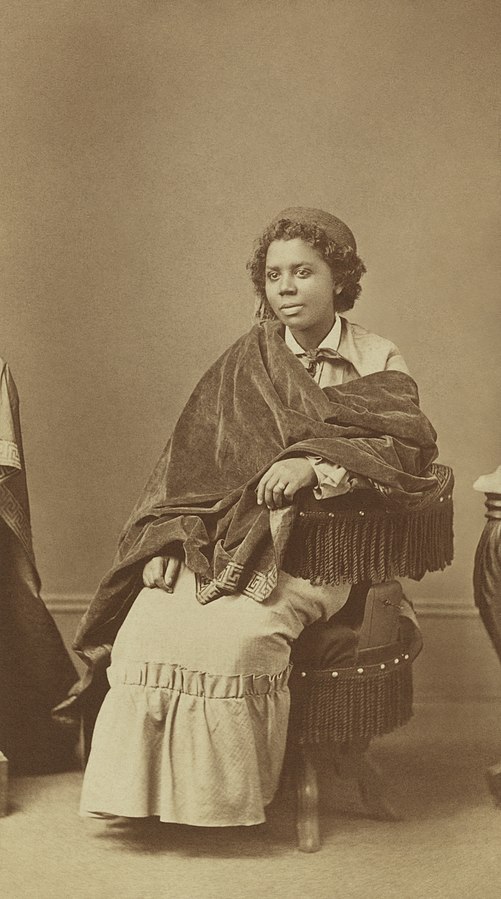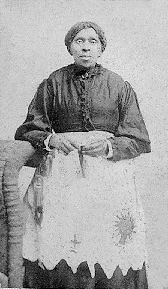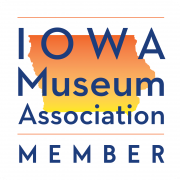Mid-20th Century Transitions (1940s-1960s)
This is a transitional time where Social Realism was generally falling out of favor while abstract art received a renewed interest which created a mix of figurative and abstract art. The WPA-FAP had lost popular support between 1940-1943 as the New Deal and those associated with the programs were attacked for socialist ideas which were now viewed as Communism. Artists of color were marginalized for being part of the WPA and Social Realism. Many artists relocated to Europe, or Mexico because of its socialist art scene.
- Elizabeth Catlett (1915-2012) Catlett was the first Black woman to receive an MFA from the University of Iowa where she studied under Grant Wood. She also studied sculpture at the Chicago Art Institute and lithography at South Side Community Arts Center in Chicago. ON a trip to Mexico she was immersed in the public art movement. In the 1950s, Catlett was a target of the US government due to her ties with WPA and the Mexican Taller de Grafica (TGP) (People’s print workshop). THe TGP was designated a communist organization and members were barred from entering the US for 10 years. Catlett remained in Mexico and taught for 15 years at the Universidad Nacional Autonoma in Mexico City. https://dailyiowan.com/2021/02/16/elizabeth-catlett-a-life-and-legacy-of-art-activism-and-academic-achievement/
Stepping Out
http://www.crsculpture.com/news/elizabeth-catlett-residence-hall-university-of-iowa
- Romare Bearden (1911-1988) Attended NYU in the early 1930s and exhibited at Harlem YMCA, Harlem Art Workshop, and the 306. Active member of Harlem Artists Guild. Bearden served in the army, stationed in Harlem during WWII. He used the GI Bill to travel to Italy and France where he was exposed to abstract art.He began working in the cubist style in the mid 1940s-1950s.1960s he developed his signature style of abstract collage and photomontage portraying African American life urban, spiritual, domestic, and familial. Co- founder of the Spiral Group of Black artists. They limited their color pallet to black and white to symbolize racial conflict. The group’s first show was in 1965. https://americanart.si.edu/artist/romare-bearden-296
Factory Workers, 1942 https://collections.artsmia.org/art/4428/factory-workers-romare-howard-bearden
- Jacob Lawrence (1917-2000) Lawrence bridged the gap between abstraction and social realism. Moving to Harlem as a teen, he took classes at the Harlem Community Art Center. Lawrence was part of the WPA-FAP when he created the Migration of the Negro Series. The series brought him national attention, several exhibitions, commissions, and a series of teaching positions beginning in the 1940s. Lawrence received the US National Medal of Arts in 1990. https://lawrencemigration.phillipscollection.org/artist/about-jacob-lawrence
The Migration series Panel #1: During World War I there was a great migration north by southern African Americans, 1940 https://lawrencemigration.phillipscollection.org/
- John Biggers (1934-2000) Biggers studied at Hampton University in 1941. In 1949, he was hired by Texas Southern University to head their new art department. The Houston and Dallas Museums of Fine Arts exhibited and purchased his works although he could not attend the exhibitions due to segregation laws. Biggers traveled to Africa in 1957 to learn about his cultural roots. His style developed into an influence of African, European, and American art. https://aaregistry.org/story/john-biggers-brought-african-influence-to-art/
Jubilee: Ghana Harvest Festival, 1959 https://emuseum.mfah.org/objects/8974/jubilee-ghana-harvest-festival
- Gordon Parks (1912-2006) Parks is an award winning photographer and filmmaker. His early career found support through the Southside Community Art Center in Chicago. Parks worked for the Farm Security Administration (FSA) before contributing work to Ebony and Vogue magazine. In 1949, Parks was hired as the first Black staff photographer. https://www.gordonparksfoundation.org/gordon-parks/biography
American Gothic, 1942 – created during his position with the FSA the image of Ella Watson, a government employed cleaning woman creates a statement on racial segregation and inequality. https://collections.artsmia.org/art/100557/american-gothic-gordon-parks. This image is a direct commentary on Grant Wood’s, American Gothic, 1930. https://www.artic.edu/artworks/6565/american-gothic
- Roy DeCarava (1919-2009) DeCarava studied at Cooper Union and the Harlem Community Art Center. He worked for WPA-FAP as a painter and studied printmaking with Charles White and Elizabeth Catlett. By 1950, DeCarava wanted to portray his own neighborhood of Harlem “as subjects worthy of art.” In 1963-66 he was the founding director of Kamoinge Workshop for young black photographers. https://www.britannica.com/biography/Roy-DeCarava
Graduation, New York, 1949, photograph – image in the book Sweet Flypaper of Life https://www.moma.org/collection/works/91322





